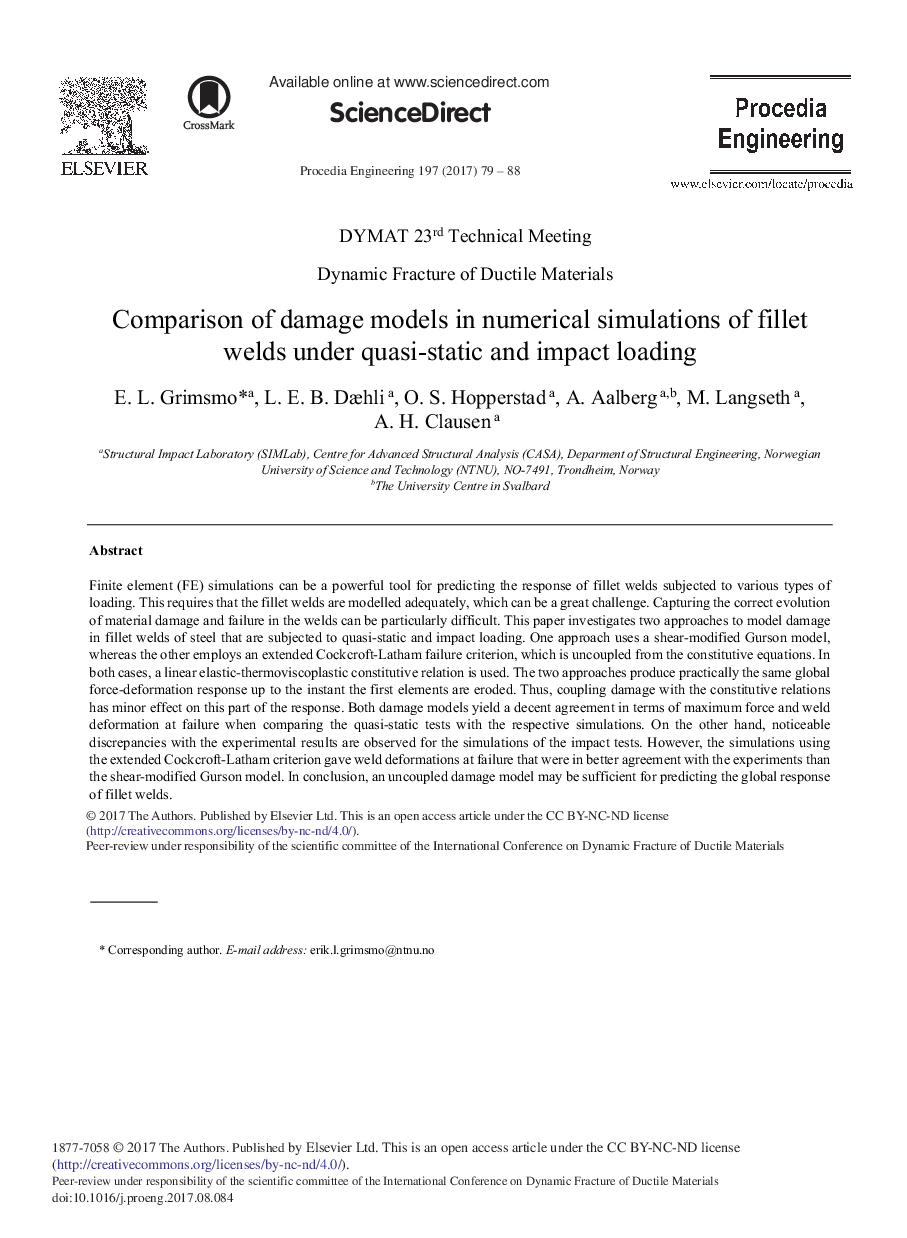| Article ID | Journal | Published Year | Pages | File Type |
|---|---|---|---|---|
| 5026883 | Procedia Engineering | 2017 | 10 Pages |
Abstract
Finite element (FE) simulations can be a powerful tool for predicting the response of fillet welds subjected to various types of loading. This requires that the fillet welds are modelled adequately, which can be a great challenge. Capturing the correct evolution of material damage and failure in the welds can be particularly difficult. This paper investigates two approaches to model damage in fillet welds of steel that are subjected to quasi-static and impact loading. One approach uses a shear-modified Gurson model, whereas the other employs an extended Cockcroft-Latham failure criterion, which is uncoupled from the constitutive equations. In both cases, a linear elastic-thermoviscoplastic constitutive relation is used. The two approaches produce practically the same global force-deformation response up to the instant the first elements are eroded. Thus, coupling damage with the constitutive relations has minor effect on this part of the response. Both damage models yield a decent agreement in terms of maximum force and weld deformation at failure when comparing the quasi-static tests with the respective simulations. On the other hand, noticeable discrepancies with the experimental results are observed for the simulations of the impact tests. However, the simulations using the extended Cockcroft-Latham criterion gave weld deformations at failure that were in better agreement with the experiments than the shear-modified Gurson model. In conclusion, an uncoupled damage model may be sufficient for predicting the global response of fillet welds.
Keywords
Related Topics
Physical Sciences and Engineering
Engineering
Engineering (General)
Authors
E.L. Grimsmo, L.E.B. Dæhli, O.S. Hopperstad, A. Aalberg, M. Langseth, A.H. Clausen,
